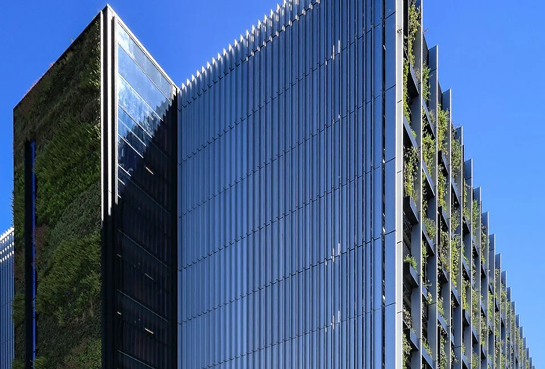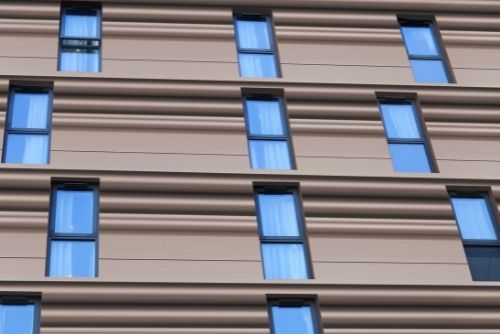
Latest
News
What is Rainscreen Cladding? – Maple Sunscreening

- About Maple (100)
- Car Parks (90)
- Office and Retail (47)
- Government (39)
- Rainscreen (36)
- Louvres (30)
- Education (24)
- Residential (24)
- Brise Soleil (22)
- Health (20)
- HSEQ (18)
- Commercial Blinds (16)
- Sustainability (15)
- Data centres (10)
- Pre-Construction services (10)
- Architectural facade (7)
- North West (2)
Maple have developed a class-leading rainscreen cladding system that’s high-performing, strong and efficient to install.
As well as meeting the latest fire-safety standards, our system has been through stringent CWCT lab-testing and has been designed to BS8414:2 2020 standards.
But what exactly is rainscreen cladding, and what should you be thinking about when specifying it for a building project?
In a nutshell
Rainscreen cladding systems are designed to protect the exterior of buildings from the weather.
WHY IS RAINSCREEN CLADDING IMPORTANT?
Rainscreen cladding systems can also improve thermal performance – reducing heat loss and saving energy – can help prevent the spread of fire, and can greatly improve a building’s appearance.
HOW DOES RAINSCREEN CLADDING WORK?
Rainscreen cladding is the most popular way to insulate modern buildings. It allows moisture to escape from the building and ensures the walls are watertight by combining a rainproof skin with external breathable insulation. A supporting structure of rails, mullions, brackets and clips complete the system but one of the most important elements requires no materials at all... an air cavity.
WHAT DOES THE AIR CAVITY DO?
By incorporating an air cavity into the cladding system, architects and designers use a simple rule of physics “the chimney effect’ to help keep buildings cool in summer and maintain a warm and steady interior temperature during winter.
Openings at the top and bottom of the cladding façade allow air to circulate. As hot air rises in the summer, cooler air falls or is drawn in from the bottom. In winter, when the air is not warm enough to lift, it provides an insulation layer that keeps heat within the building.
OTHER BENEFITS OF RAINSCREEN CLADDING SYSTEMS
The continuous circulation of air behind the cladding reduces condensation and humidity, and extends the lifespan of the building, while a more stable temperature within the building envelope can prevent the risk of cracks and other structural issues that come from material expansion and contraction.
Water ingress is reduced (perhaps surprisingly) by allowing air to move between the inside and outside of the rainscreen, equalising the pressure and preventing water from being driven or sucked it.
Of course, since the 1940s, rainscreen cladding has also been used to improve the way buildings look. Initially used as a cost-effective way to hide imperfection in building renovations and refurbishment (for which it received a bad press) rainscreen cladding is now at the forefront of modern architectural, with lightweight aluminium systems providing endless design possibilities.
WANT TO FIND OUT MORE?
Maple's Knowledge Centre is an unbiased source of information for the façade industry and tackles important topics from industry standards to powder-coating for marine environments.
